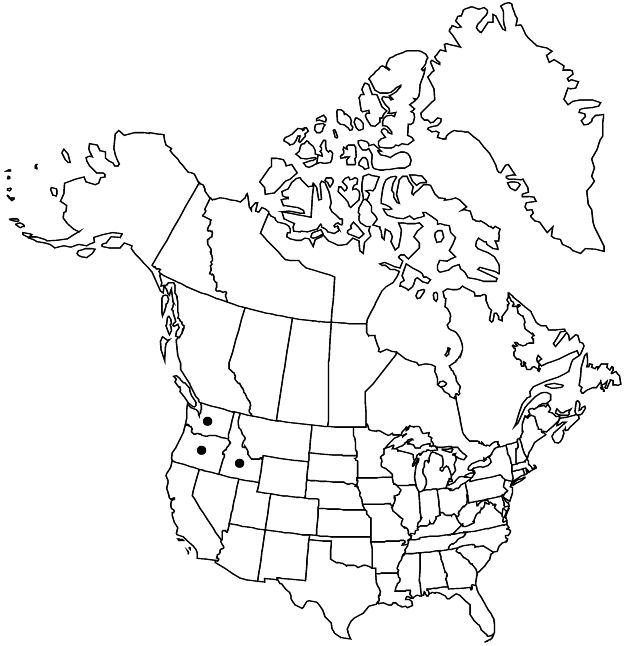Horkelia fusca var. capitata
Man. Pl. Oregon, 398. 1941.
Stems 4–9 dm. Basal leaves green, 10–20 (–35) cm; leaflets 4–6 (–8) per side, cuneate to broadly obovate, 10–30 (–35) × 10–25 (–30) mm, 1/2 to as wide as long; divided 1/5–1/4 to midrib into 8–15 teeth, surfaces not obscured, ± sparsely short-hirsute to glabrate. Cauline leaves 3–6; leaflets of proximalmost 3–5 per side. Inflorescences dark reddish purple, densely congested, comprising no more than 1/6 of stem, composed of 5–30-flowered glomerules, glandular-hairs usually conspicuously red-septate; bracts acuminate-lobed, obscuring pedicels and flowers even at maturity. Flowers: epicalyx bractlets (2–) 3.5–5 (–6) mm; hypanthium 2–3 × 3–5 mm; petals 4–6.5 mm; filaments 0.5–1.5 mm, longer than wide, anthers 0.5–0.6 mm; styles 1–1.5 mm. Achenes 1.6–1.8 mm.
Phenology: Flowering summer.
Habitat: Dry meadow edges, in conifer woodlands, mainly on volcanic or granitic soil
Elevation: 100–2300 m
Distribution

Idaho, Oreg., Wash.
Discussion
As here circumscribed, var. capitata is found in meadow margins and grassy openings in the forested mountains surrounding the Palouse Prairie (in the broad sense) of northern Idaho, southeastern Washington, and northeastern Oregon. This is a significantly more limited range than accepted by D. D. Keck (1938) and in subsequent floras (for example, B. Ertter 1993d), with the bulk of what had been treated as var. (or subsp.) capitata here treated as var. pseudocapitata. The distinctions between the two varieties are more matters of degree than absolute differences, var. capitata generally having more congested, more purple, more glandular inflorescences in which the pedicels and hypanthia remain covered by larger involucral bracts divided into more elongate teeth. Plants of var. capitata can also be significantly larger, especially in the remnant prairie patches of northern Idaho, with more numerous cauline leaves having more pairs of larger leaflets. The extremes of the two varieties are reasonably distinct, with a significant biogeographic underpinning, but the differences merge in the Blue Mountains of Oregon.
Given the California focus of the published source (P. A. Munz 1959), the chromosome count of 2n = 28 for var. capitata is most likely based on material here treated as var. pseudocapitata.
Selected References
None.
Lower Taxa
"thin" is not a number."/2lengthoftonearlyequaltosepals" is not declared as a valid unit of measurement for this property."dm" is not declared as a valid unit of measurement for this property."dm" is not declared as a valid unit of measurement for this property."dm" is not declared as a valid unit of measurement for this property.